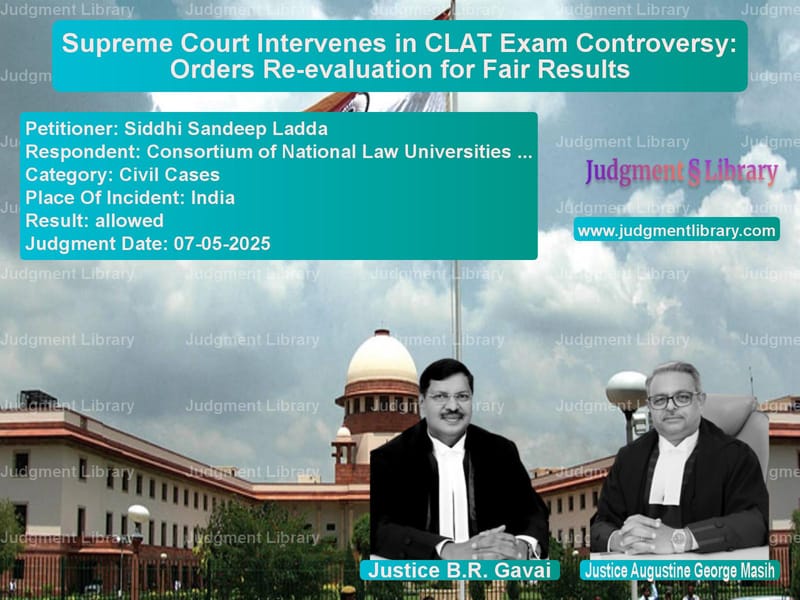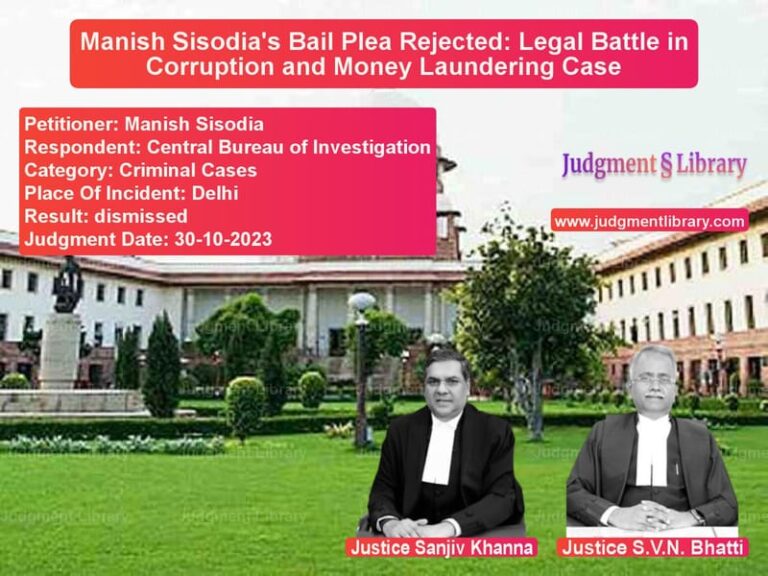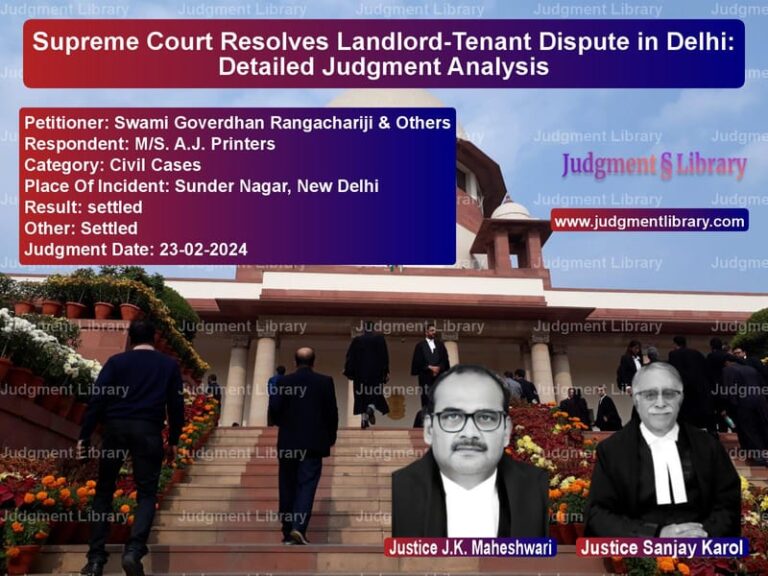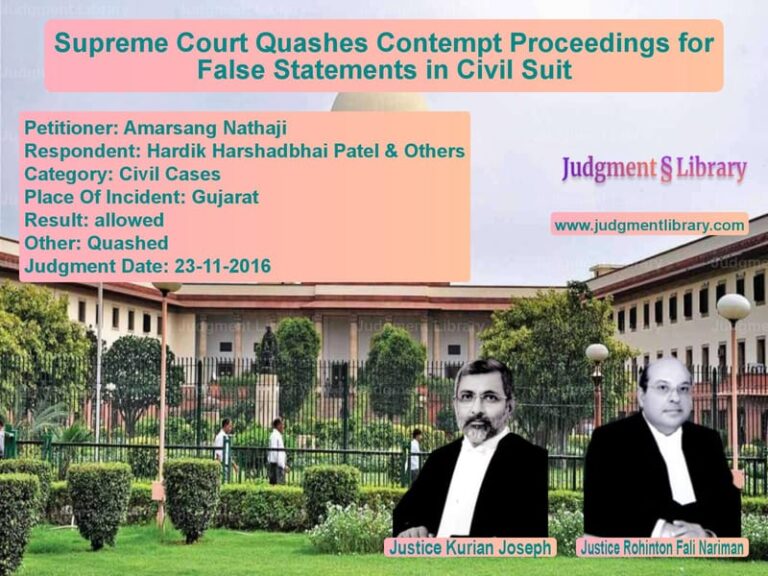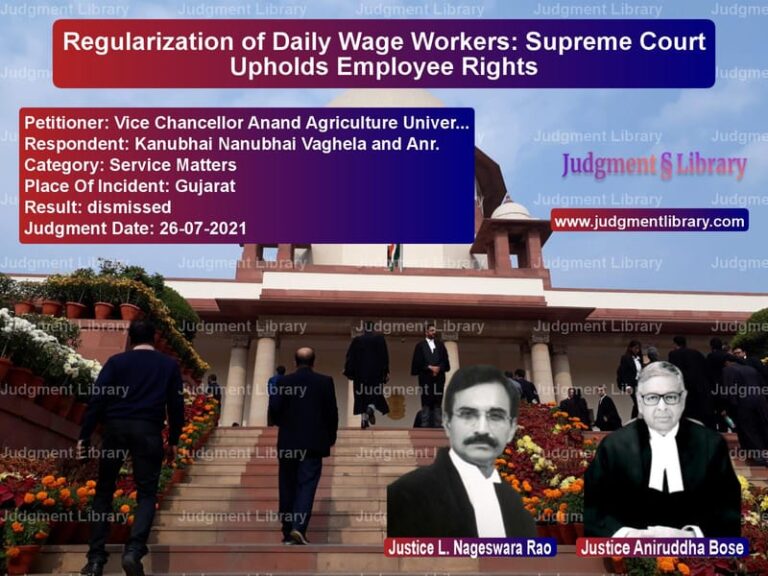Supreme Court Intervenes in CLAT Exam Controversy: Orders Re-evaluation for Fair Results
The Common Law Admission Test (CLAT), the gateway to prestigious National Law Universities in India, found itself under the scrutiny of the Supreme Court once again due to questionable examination practices. The case of Siddhi Sandeep Ladda versus the Consortium of National Law Universities brought to light serious concerns about the quality and fairness of one of India’s most competitive law entrance examinations. The Supreme Court’s intervention highlights the critical need for accountability in educational assessments that determine the futures of thousands of aspiring law students.
The Supreme Court bench comprising Justice B.R. Gavai and Justice Augustine George Masih expressed deep concern about the examination’s quality, stating at the outset: “We must express our deep anguish regarding the callous and casual manner in which the Respondent No.1 has been framing questions for the Common Law Admission Test (CLAT), an examination on the basis of which meritorious candidates get entry into the prestigious National Law Universities across the country.” This strong observation set the tone for the Court’s detailed examination of six controversial questions from the CLAT examination.
The Court noted that this wasn’t the first time CLAT had faced scrutiny, referring to its earlier judgment in Disha Panchal case where it had constituted a committee to look into the shortcomings in CLAT’s conduct. The Court had previously observed that “the idea of entrusting the task of monitoring the conduct of entire examination to different Law Universities every year also needs to be re-visited.” Despite these previous interventions, the problems persisted, compelling the Court to examine the current controversies.
The Court acknowledged its general reluctance to interfere in academic matters but justified its intervention by stating: “However, when the academicians themselves act in a manner that adversely affects the career aspirations of lakhs of students, the Court is left with no alternative but to interfere.” This principle guided the Court’s approach as it examined each disputed question individually.
Question 56 dealt with environmental protection duties under the Constitution. The reading material clearly stated that “in many judgments the Supreme Court ruled that both the State and its residents have a fundamental duty to preserve and protect their natural resources.” Despite this clear statement, the Consortium argued that only option (d) was correct because it used the word “citizens” instead of “residents.” The Court expressed astonishment at this argument, stating: “We are amazed that such a stand has been taken by Respondent No.1, which is expected to be led by scholars and experts in the field of legal education.” The Court directed that marks be awarded for both options (c) and (d).
Question 77 involved contract law concepts, specifically about agreements with minors. The Consortium argued that candidates could answer this without legal knowledge by applying logic to the provided material. The High Court had declared this question “out of syllabus,” but the Supreme Court disagreed after examining the reading material. The Court noted that “unless rejected by a party, a voidable contract will remain valid and enforceable. The party who is at a disadvantage due to any circumstance applicable to the contract has the ability to render the agreement void.” Based on this reasoning, the Court found that option (b) was indeed the correct answer and reinstated the question.
Question 78, also based on contract law concepts, asked which scenario would most likely result in a void agreement. The Court agreed with both the Consortium and the High Court that option (c) – “An agreement to pay 10 lakhs on getting a government job” – was the correct answer. This question was allowed to stand without changes.
Question 88 involved a logical reasoning problem about seating arrangements. The Court noted the inconsistency in the Consortium’s approach, observing that “if the Respondent No.1 thought it fit to delete Question No. 85, it ought to have deleted Question No. 88 as well” since both questions were based on the same material and involved similar complexity. The Court therefore directed that Question 88 be deleted entirely.
Questions 115 and 116 involved mathematical calculations based on wage gap data. For Question 115, which required calculating women’s wages in Goa based on given percentages, the Court found that “the candidates will have to undergo a detailed mathematics analysis, which is not expected in an objective test.” The Court deleted this question, noting that such complex mathematical analysis wasn’t appropriate for this type of examination.
Question 116, which depended on Question 115, was also deleted to maintain consistency. The Court accepted the Consortium’s fair submission that “Respondent No.1 is willing to withdraw the question across all four sets so as to ensure that all candidates are scored out of the same total number of questions.” This ensured equal treatment for all candidates regardless of which question set they received.
The Supreme Court’s detailed analysis of each question demonstrated its commitment to ensuring fairness in competitive examinations. The Court recognized that when examination authorities fail in their duty to set fair and appropriate questions, it directly impacts the career prospects of thousands of deserving candidates. By carefully examining the reading material provided for each question and the logical reasoning required to answer them, the Court established clear principles for what constitutes a fair examination question.
The judgment also highlighted the recurring nature of problems with CLAT examinations. The Court’s reference to its earlier judgment in Disha Panchal case indicated that despite previous interventions and committee formations, the fundamental issues with CLAT’s question-setting process remained unresolved. This pattern suggests systemic problems that require more comprehensive reforms beyond case-by-case judicial interventions.
The Supreme Court’s approach balanced judicial restraint with necessary intervention. While acknowledging that courts generally avoid interfering in academic matters, the Court emphasized that when academic authorities themselves act in ways that jeopardize students’ futures, judicial intervention becomes essential. This principle ensures that examination authorities remain accountable and maintain the highest standards of fairness and quality.
The final directions required the Consortium to “amend the answer key, revise the marksheet and re-publish/notify the final list of candidates forthwith and commence with the counselling within 2 weeks from today.” These time-bound directions ensured that the resolution of the legal issues didn’t unduly delay the admission process for successful candidates.
This judgment serves as an important precedent for maintaining standards in competitive examinations. It establishes that examination authorities must ensure that questions are fair, unambiguous, and test the appropriate skills and knowledge. When questions are poorly framed or require knowledge beyond what the examination purports to test, they compromise the examination’s integrity and fairness to all candidates.
The Supreme Court’s intervention in CLAT underscores the critical role of judicial oversight in protecting students’ rights to fair assessment. In a country where competitive examinations determine access to limited educational opportunities, ensuring that these examinations are conducted with the highest standards of fairness and quality is essential for maintaining public trust in the education system. This judgment reinforces that principle and provides guidance for future examination reforms.
Petitioner Name: Siddhi Sandeep Ladda.Respondent Name: Consortium of National Law Universities and Another.Judgment By: Justice B.R. Gavai, Justice Augustine George Masih.Place Of Incident: India.Judgment Date: 07-05-2025.Result: allowed.
Don’t miss out on the full details! Download the complete judgment in PDF format below and gain valuable insights instantly!
Download Judgment: siddhi-sandeep-ladda-vs-consortium-of-nation-supreme-court-of-india-judgment-dated-07-05-2025.pdf
Directly Download Judgment: Directly download this Judgment
See all petitions in Education Related Cases
See all petitions in Judgment by B R Gavai
See all petitions in Judgment by Augustine George Masih
See all petitions in allowed
See all petitions in supreme court of India judgments May 2025
See all petitions in 2025 judgments
See all posts in Civil Cases Category
See all allowed petitions in Civil Cases Category
See all Dismissed petitions in Civil Cases Category
See all partially allowed petitions in Civil Cases Category

